During the past decade, literary depictions of the deviant mind have come to play a steadily growing role in contemporary Nordic literature: forthright explorations of what it is like to live with a mental health disorder, or what it is like to be a relative and perhaps even a tacit inheritor of disorders defined by psychiatry as mental aberrations. Contemporary literature is primarily concerned with linking the deviant mind and the deviant body with an uncompromising creativity – more often than not, a creativity that is directly associated with the role of the writer. At the same time, the texts in question are oriented towards understanding mental deviation as a subversive and barrier-breaking energy. An energy and a force, which enable the ‘I’ to break with rigid identity configurations – particularly in relation to gender and sexuality – and thereby to try out new potentials. Paradoxically, mental deviation is also perceived as an unbearable stigma, as a curse, and as a way of life that invariably, both intentionally and unintentionally, balances on the edge of what we call reality.
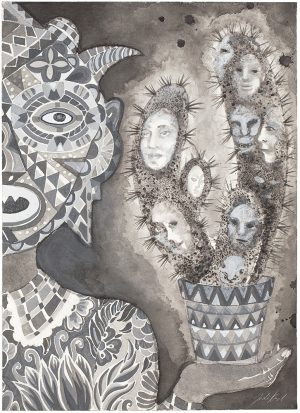
The growing number of narratives about various mental states is indisputably connected with the extreme contemporary quest for both physical and mental wellbeing; receiving and living with a diagnosis must also be seen as a highly potent emblem of identity and exclusion. As psychologist Svend Brinkmann wrote in Det diagnosticerede liv (2010; The Diagnosed Life): “Health has become the new overriding value in western societies and at the same time, we attest to an expansion of the concept of illness with a proliferation of all sorts of new diagnoses, not least in the psychiatric domain.” This has led to “a commercialisation of health, everyday life has been medicalised and rendered an object of therapy”, as Brinkmann points out .
In contemporary psychiatric literature, this normative health paradigm becomes the setting for the text, as it were. A setting in which the ‘I’ ambivalently attempts to simultaneously behave appropriately and to cause havoc, in an ambiguous attempt to dutifully live up to social expectations and concomitantly break with all norm systems – particularly with reference to body, gender, and sexuality.
The literary leaning towards psychiatry is played out in tandem with an autofictional genre wave and a large proportion of these texts are thus based on personal observations and experiences. This is the case with, for example, the Norwegian/Swedish writer Beate Grimsrud’s (b. 1963) En dåre fri (2010; A Fool, Free, 2015), a novel which uses a retrospective autobiographical device in order to – by turns – gather and spread the fragmented schizophrenic self. It is also the case in Danish author Lotte Inuk’s (b. 1965) novel, Sultekunstnerinde (2004; The Hunger Artist), which retrospectively describes young androgynous Charlie’s teenage years living with an anorexic eating disorder, and in Danish author Pablo Llambias’ (b. 1964) three volumes of sonnets, Monte Lema (2011), Hundstein (2012), and Sex Rouge (2013). In Llambias´ sonnets, anxiety – and the medicinal control of anxiety, in particular – becomes a corporeal, and in many ways de-gendered, starting point for new processes of identity and writing.
In Danish writer Christel Wiinblad’s (b. 1980) passion play, Ingen åbner (2012; Nobody Opens), the female protagonist of the novel – who sees herself as “distressed”, “derailed”, and “abnormal” – is similarly entangled in this ambivalent and, again, highly physical longing. On the one hand, she wants to be normalised and adjusted. On the other hand, she wants to break radically with external and inner expectations, alike. Though Wiinblad devises a fictionalised third-person narrator, the novel’s protagonist and her life story bear a remarkable resemblance to the autobiographical ‘I’ we encounter in the poetry collection, Min lillebror (2008; My Younger Brother).
Norwegian writer Linda Boström Knausgård’s (b. 1972) Helioskatastrofen (2013; The Helios Disaster, 2015) and Swedish writer Sara Stridsberg’s (b. 1972) Beckomberga (2014; Beckomberga Psychiatric Hospital) centre on the first-person narrator’s personal experience of mental illness or the mental healthcare system as well as the relationship between the institutionalised father and the abandoned child’s view of the deviant father figure. As readers, we – like the child – look at the mental derailment and disintegration from the outside, as something happening to our closest relative and something that might, in time, (perhaps) be reborn in us. In these works by Knausgård and Stridsberg, the psychiatric diagnosis becomes a structure handed down from (in particular) father to daughter, an ambivalent inheritance, part blessing part curse.
In contemporary literary records of inner mental landscapes, insanity is not just an impediment to the individual’s development, it is also a dynamic and inquisitively probing launchpad for new forms of identity.
“In-Between Man and Woman”
The abovementioned works are all driven by a consistently ambivalent emotional structure, with the ’mad’ first-person narrator consistently assuming obstinate both-neither positions or precarious – and, not least, playful and dreamy – intermediate positions. These inconstant intermediate positions are generally linked to experiments with gender, body, and sexuality.
Symptomatically, En dåre fri opens with the three following short sentences:
“My name is Eli. Which means my God in Hebrew. It can be a girl’s name or a boy’s name.”
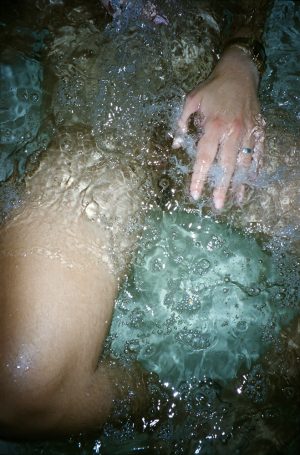
This opens up for a thorough deconstruction of gender as we know it, a motif of decomposition that is also linked to the psychiatric motif. Eli is biologically a girl/woman but gradually, and in step with her developing schizophrenia, various male identities are born inside her (six-year-old Esben, ten-year-old Emil, sixteen-year-old Erik, twenty-six-year-old Prince Eugen). The formation of these male identities serves (textually and emotionally) as a sophisticated defence mechanism intended to wipe out fixed genderedness and maintain the possibility of both genders. During the course of the novel, Eli wonders if she is transgender, on such occasions, she considers changing sex but paradoxically, she does not know which gender she should change to: “When I finally get to the form where I’m asked which sex I want to become, I cannot answer. I cannot decide which one. And so I just put down a question mark.”
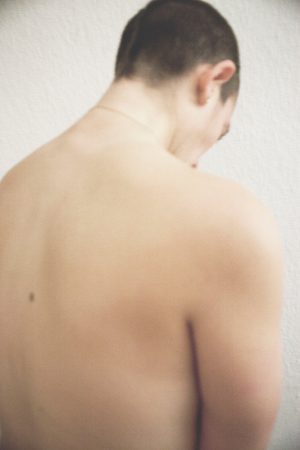
Eli is governed by a fundamental gender ambivalence and from early childhood until her thirty-ninth year, the period covered by the book, she is extremely occupied with maintaining a dual gender identity. As she says: “We should live a little as each gender so we could know what gender is, I think.” This precarious gender identity is given various labels throughout the novel: “being both a prince and a princess”, “Eli with the boys”, “boy-self and girl-self”, “the ladyboy”, “androgynous”, “Eli both-neither”, “Neuter”, and “In-between man and woman”. Eli’s gender identity is entirely disconnected from desire and sexuality and this is one reasons why she does not identify with, for example, a transgender position. In terms of structure, by virtue of her asexual position, she is associated with a dream and a fantasy of remaining an ungendered asexual child, a “sexless child”, or “the eternity child”, as Eli puts it.
As is the case with androgynous Charlie, a girl with an eating disorder in Lotte Inuk’s Sultekunstnerinde, and Christel Wiinblad’s Ingen åbner, the greatest fear seems to be the adults’ sexualised gendered form:
“Langsomt vokser tanken frem om, at jeg ikke længere er et barn. Den er skræmmende. Jeg ser på min krop i spejlet. Jeg er tynd og formløs, med små bryster, det ene lidt større end det andet. Brysterne kan vente, tænker jeg. Jeg er ikke parat. Jeg ved jo ikke engang, om jeg vil være kvinde. Jeg har brug for mere tid. Jeg gemmer mig i drengestemmerne.” (En dåre fri).
“Slowly the thought that I am no longer a child grows in me. It’s frightening. I look at my body in the mirror. I am slim and shapeless, with small breasts, one slightly larger than the other. Breasts can wait, I think. I’m not ready. I don’t even know if I want to be a woman. I need more time. I hide myself in the boys’ voices.” (A Fool Free).
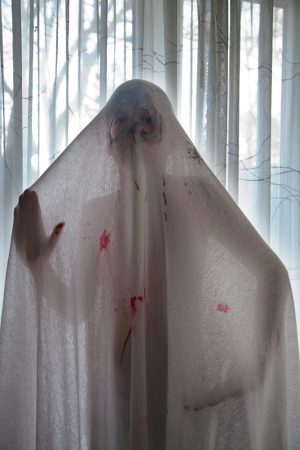
Or, in Wiinblad:
”Hun er nærmest tilstrækkelig nu. Hun føler sig nærmest tiltrækkende nu. Det er forstyrret, at det føles så rædselsvækkende. Det er selve det frigide ikke at ville være en tiltrækkende kvinde.” (Ingen åbner).
“She is almost adequate now. She feels almost attractive now. It is deranged for it to feel so horrifying. Not wanting to be an attractive woman is frigidity itself.” (Ingen åbner).
In Sultekunstnerinde, we meet a young teenage girl, Charlotta, who, like Eli, insists on using an androgynous name: Charlie. During her early teenage years – as expatriate Dane in Greenland – Charlie develops a case of pronounced anorexia nervosa, for which she is eventually hospitalised. The cause of her anorexia nervosa is shown to be complex and varied but a central aspect of the illness is the rejection of a fixed gender identity. Her anorexia nervosa is depicted as a reaction to or a symptom of an emotional ambivalence in relation to gender and subjectivity, an ambivalence similar to the one we encounter in Grimsrud’s novel. As a child, Charlie insists on being sexless and desire-less. The gendered body thus becomes a highly visible and overwhelming obstacle standing in the way of that goal: “But now my body is betraying me. It denies me my right to both/neither, either/or, my right to be a child, or even just to be a person.” (Sultekunstnerinde).
In Wiinblad, too, the child’s body becomes an ideal of the pre-gendered and pre-subjectified state: “He’s just teasing her with the truth. He teases her about being envious of children’s skin.” (Ingen åbner).
Wiinblad, like Inuk, makes a direct link between food, the body, and being gendered. Food and mealtimes are typically, and on several levels, a social and relational go-between. We absorb something external into our bodies and often what is edible and drinkable is provided by others and consumed in the company of others. Inuk and Wiinblad both focus on the theme of the relational value of food, given that they ambivalently long for and resist the other’s presence and influence.
As intimated, the biological body not only impedes the idealised gender middle positions in Grimsrud, Wiinblad, or Inuk. The gendered body becomes a theme as something discursively imperative, something forced onto us by the other, by cultural norms and ideals. As Eli puts it: “It’s the others, society that has decided which sex I should be. It doesn’t come from me.”(A Fool, Free).
Wiinblad links the act of eating properly and normatively with a particular form of required normality, a normality she both seeks out and runs from:
“Mad er en vigtig del af det dejlige og det skønne. Den er altafgørende i det gode liv. Man skal spise, ved hun. Hun spiste forkert og fanatisk før. Hun ville jo ikke spise kartofler og drikke kaffe. Hun ville ikke drikke vin. Hun kan næsten se, at det er skræmmende. Det er jo en vigtig del af trivslen og familielivet. Det er sådan, hele samfundet er bygget op.” (Ingen åbner).
“Food is an important element of what is lovely and noble. It is crucial to the good life. She knows you have to eat. She ate incorrectly and fanatically before. So, she wouldn’t eat potatoes and drink coffee. She wouldn’t drink wine. She can almost see that it is scary. After all, it is part of well-being and family life. How society in its entirety is structured.” (Ingen åbner).
Danish writer and performer Nielsen (b. 1963) has gone by various names over the years, all according to his changing identity configurations, e.g. Claus Beck-Nielsen and Das Beckwerk, however at the time of writing, he goes under two gender-polarised names: Nielsen (man) and Madame Nielsen (woman). His gender split between the feminine and the masculine is pursuing something akin to what is at play in the works by Grimsrud, Wiinblad, and Inuk. In the essay, “Ikke noget kønnet syn!” (Not a gendered sight! A play on the meaning of the Danish word, ‘køn’, meaning ‘sex’, ‘gender’ and also ‘pretty’ and ‘nice’) from Nielsens triptykon (2013; Nielsen’s Triptych), Nielsen’s intention is indeed to understand the human being ”as a being beyond gender”. In Nielsen’s view, gender is primarily a potential. “Gender is a possibility” that may open, close, transform, and change. Nielsen, depicted in the essay as a woman and who assumes various female stances, is also – like Eli and Charlie – seeking a position beyond desire and sexual orientation. Gender, in other words, is not defined by its biological or performative sexual orientation but by its various changeable and interim potentials:
“Der er lige en ting: Disse billeder, det er ikke fordi, jeg (i virkeligheden) er bøsse, jeg er ikke ved at springe ud af noget skab, det har intet med min lyst at gøre. Jeg og disse apparitioner af mig er og vil ikke være en del af den lystøkonomi, som har hjemsøgt og behersket det 20. århundrede, fra Freud til Foucault, og som siden er blevet transporteret ind i det 21. århundrede af gender studies, camp og hvad har vi, lad mig være fri!” (“Ikke noget kønnet syn!’’).
“There’s just the one thing: these images, it’s not because I am (in reality) a gay man, I’m not about to come out of any closet, it has nothing to do with my desire. I, and these visions of me, am not and will not be part of the economy of desire that has afflicted and controlled the twentieth century, from Freud to Foucault, and which has since been shipped into the twenty-first century by gender studies, camp, and whatnot – give me a break!” (Ikke noget kønnet syn!)
Or, in Madame Nielsen’s words in the novel, Den endeløse sommer (2014; The Endless Summer):
“Den unge dreng, som måske er en pige, men endnu ikke ved det. Den unge dreng, som måske er en pige, men som aldrig vil røre en mand, aldrig klæde sig nøgen med en mand og gnide sin hud mod hans (…)”.
“The young boy, who is perhaps a girl, but does not yet know it. The young boy, who is perhaps a girl, but will never touch a man, never strip naked with a man and rub his skin against his skin (…).”
(Madame) Nielsen’s anorexically thin body functions simultaneously as a physical and highly explicit attempt to leave the potentials of the body open in a kind of as yet not refashioned genderness. S/he is the possibility of both genders in the same way as schizophrenic Eli “store[s] the possibility somewhere deep inside” (A Fool, Free) and anorexic Charlie, like Nielsen with his starved body, insists on keeping gender as an ambivalent both-neither/either-or, as a possibility rather than a fixed indicator of identity.
The same applies in the Swedish writer, Åsa Maria Kraft’s (b. 1965) radical love story, the novel, Selvpornografi Akt 1 (2012; Autopornography Act I), where the author simply rejects the gender polarisation and only uses the gender-neutral pronoun, Hen (S/he).
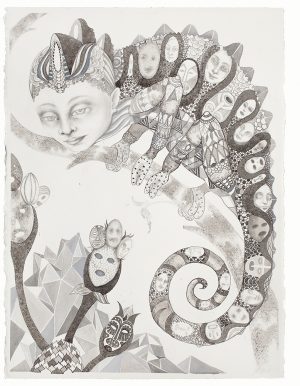
The theme of genderedness in these works demonstrates a common feature: paradoxically, the aim is not to win the right to a specific identity with a specific gendered body and/or a specific sexuality (heterosexual, homosexual, bisexual, or transgender). The struggle is to win the right to part company with the normative coupling of gender to desire as such – to cut loose from being a desirous gendered subject in order to be born as a pre-desirous subject, a gender potential, the blank page.
Unlike the equality-ideological and emancipation-orientated battles of the sexes fought by women writers of the 1880s and 1970s, contemporary literature addresses a fundamental break with gender as such and a route back to a pre-gendered condition. It is, in other words, neither a ‘woman’s issue’ nor a ‘man’s issue’ simply because the aspiration is to overcome and obliterate the traditional polarisation. Nor would it seem to be a ‘queer issue’ because these works turn away from notions of liberated desire as the motor driving identity-political projects.
As Nielsen writes:
“Kønnet er ikke noget givet, kønnet er ikke en identitet, men kønnet er heller ikke (bare) en performance eller noget rent performativt. Kønnet er noget, der træder frem, tager form, som noget sanseligt, bemærkeligt, mærkeligt, i korte og længere øjeblikke, og aldrig længe nok til, at det er sikkert og vist. Kønnet er der, og så forsvinder det. Og dukker op igen, som noget andet, eller lidt andet, eller tredje.” (Ikke noget kønnet syn!)
“Gender is not a given, gender is not an identity, but nor is gender (just) a performance or something purely performative. Gender is something that emerges, takes shape, as something sensual, noticeable, strange, for brief and longer moments, and never long enough to make it steady and certain. Gender is there and then it vanishes. And appears again, as something different, or a little different, or completely different.” (Ikke noget kønnet syn!)
In the annals of literary history, however, a third sex, the polyphonic gender or an androgynous position, is not a new figure or a new motif. In Antiquity, and later in the Romantic period, androgyny and the androgynous gender position was cultivated as particularly exclusive and exalted. Interestingly, here too, the androgynous character was a pre-sexual figure recalling a virginal paradisiacal state. Contemporary literature does not simply recycle this figure but makes an icon of it, tying it to the possibility of establishing new polyphonic gender identities and to a particular type of creativity.
“If I’m Writing, I’m at the Centre of My Own Life. At Home in Myself.”
Since the nineteenth century, there has been a literary tradition of linking ‘madness’ and psychiatric deviances with a particular type of artistic creativity. Being an artist (writer, painter, musician, actor, and so forth = ‘artistic spirit’) has typically been associated with a particular kind of suffering and a particular kind of insight. This somewhat romantic and idealised notion of the mad artist having a special alliance with wisdom and truth, of the artist being in possession of a special insight and a special creativity, is a recurring and central notion in contemporary literature.
In the autofictional novels, the book in the reader’s hand is concrete evidence of the mad mind’s ability to produce art. As Grimsrud puts it on the first page of En dåre fri: “Writing is not a profession. It is a way of life”.
The novel, En dåre fri, is written in the psychiatric institution, in which Eli is hospitalised at regular intervals during her adult life. The actual writing process plays an ambivalent role for Eli, in that the ‘madness’ or ‘deviance’, which in this case produces multiple internal boys’ identities, seems to be the very source of the written work. However, the written work is also perceived as a way out of the madness, or at least a refuge: “Writing is a hole in the illness. I run into my room and comfort-write. Eat my way through the paper.”
The writing is not anything she forces out, it is something that comes to her, almost like a divine vein originating in her thoughts and flowing through her pen: “I’m given something. I’m given stories. Four. Often I lose the thought before it gets to the pen. Now, however they keep a gentle pace all the way down onto the paper. Sometimes, I get frustrated when the words and images come so fast that I can’t catch them. But this time I do. Open my hands, throat, and pelvis and receive (…) If I’m writing, I’m at the centre of my own life. At home in myself.”
One might say, that by fragmenting Eli’s gender identity, and thereby causing her to appear as a very striking deviance from the surrounding norm, schizophrenia functions as a gift, which must paradoxically be understood as both the launchpad for her deviation and relief from it. As the first-person narrator puts it: “I am deviant. Can we use that in some way?”
The benefit would seem to be that Eli – through schizophrenia – is awarded the opportunity to experiment with her changeable and unsettled genderedness, she is never stuck in a fixed gender position, and her deviance is advantageous to the pursuit of creative writing.
The young female first-person narrator in Linda Boström Knausgård’s Helioskatastrofen also perceives her incipient schizophrenia as a divine miracle she has been gifted: “Every Sunday, I spoke in tongues, if that was indeed what I was doing when the words came, seeming to pour out of my mouth, the only thing that was real. The words that intertwined and sang.” In Helioskatastrofen, as in En dåre fri, schizophrenia assumes an ambivalent position given that it appears as something valuable (to the first-person narrator) and as something disruptive (to her father). At an early stage, the first-person narrator reflects on this discrepancy between the voices: “I thought about the voices for a long time. About how my strange voice was healthy, even valuable, while his was sick and meant that he had to be locked up in a hospital.”
However, when confronted with institutionalised psychiatry, this artist-romanticism is often turned upside down, the creative artist-self becomes a patient, and the unique and special is immediately reduced to a disabling deviance to be remedied through rigorous medication. This transformation is particularly pronounced in Helioskatastrofen, which purely in terms of composition is divided into a text before hospitalisation (Part 1) and a text during hospitalisation (Part 2). Eli’s madness-romanticism in En dåre fri also comes sharply up against the normalisation practices of psychiatry. Eli’s creative writing process is also effected by the antipsychotic medication that she, now and again, asks for and is forced to take, and she loses the ability “to create anything new” in the periods when she is heavily medicated.
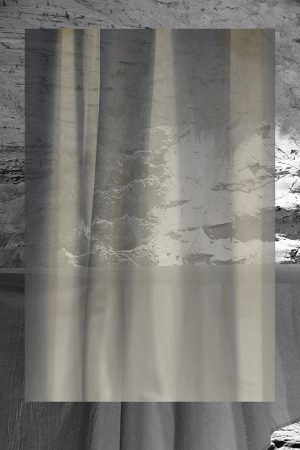
Antipsychotic medications’ debilitation of creative power is also a central motif for Pablo Llambias. The chapter entitled “Anxiety” in Monte Lema (2011) gives a detailed description of his encounter with various types of psychotropic medication, which he took in an almost experimental way to assuage his anxiety and perhaps also to give his text an underlying structural form – taking medication is, in any event, a structural form holding the text together. In sonnet form, he makes detailed descriptions of his experience with various types of psychotropic medication, and these experiments are subjected to an ambivalence between form and formlessness. Formlessness because he is devalued as gender and as subject, primarily because he can no longer desire, and form because the ways and waywardness of anxiety function as an underlying structural form that gives him new identities or the possibility to play with new options of self-construction.
Through his illness, he relates experimentally to identity and masculinity – and the anti-anxiety medicines move these experiments forward.
The chapter opens with him taking “the first pill”, whereupon he paradoxically proclaims: “This is the last day I’m ‘normal’ (…) Is it a kind of death sentence on me? On the ’I’ that I know?”
Through the course of close to 150 pages, the reader is introduced to a series of medicines, Zyprexa, Abilify, Risperidone, their effects and side effects. At the centre, besides the endless recording of purely physical and mental side effects, is the loss of the narrator’s sexual desire. Thus, the familiar ‘I’ sentenced to death at the beginning of the chapter is a thoroughly gendered self, a masculine desiring self, being dismantled or castrated through the medicines.
The defusing of desire, which in many ways is actually accelerated in the sonnets, sends the ‘I’ into an androgynous self-reflection similar to the one in, for example, the works by Grimsrud or Madame Nielsen. The androgynous position is described as “a grey area”: “In the grey area. I am definitely in the grey area. It’s a fine place to be.” (Monte Lema).
In Monte Lema, however, disintegration of gender is also a loss to be lamented because sexual desire is linked directly to creative power: “I don’t want anything. These pills take away my desire for anything at all”. This loss is also expressed as, for example, “the duvet that the pills put on top of me”, or as a zombie state: “I am without libido. I am a zombie. White as a blank sheet of paper.”
In Sara Stridsberg’s novel Beckomberga, where we follow the daughter, Jackie, of the hospitalised father, Jim, this creativity motif is recurrent, both in the father figure’s self-perception and in the daughter’s view of her father. In the daughter’s eyes, the father, and the other patients at Beckomberga psychiatric hospital, seems to be surrounded by quite a special aura, a high sensitivity: “Their lives were seemingly golden, elevated. They were suspended in a brilliant singularity slightly above the lives of everybody else” (transl. Maria Zennaro). Or, as the psychiatrist Edward puts it: “A golden vein pulses within you, Jim” (transl. Maria Zennaro), a vein that Jackie has presumably inherited from her father, understood here, as equal parts gift and curse. The father, Jim, is a pianist, and the piano in Beckomberga’s sitting room functions as a refuge in the same way that writing does for Eli: “When inside the music, he did not have to face the world outside. A world, where music is everything he has ever dreamed of” (transl. Maria Zennaro).
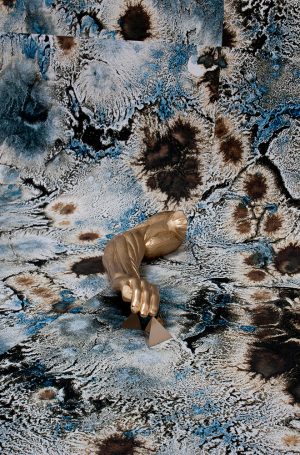
Or, as Jim puts it: ”I am actually rather grateful for having fallen ill. Otherwise, I would have been unable to understand life” (transl. Maria Zennaro).
Being mentally deviant, mad, or having mental health problems is thus linked with an ambivalent, pre-subjectified position. Deviance from the norm represents a disabling personality trait, stripping the self or the loved one of the ability to function normally in the eyes of society. At the same time, deviance is perceived as a unique and virtually sublime character trait, as ”a gift” (Beckomberga) typifying ”the artistic mind” (Sex Rouge).
Beyond the literary world, however, things look rather different. Contemporary psychiatric discourse poses mental illness as something unambiguously unwanted and concurrently removed from the subject. As the Danish doctor and broadcaster, Peter Geisling, writes: “A psychiatric diagnosis is a name for a series of symptoms that occur together and thereby constitute an overall condition or illness. It is an illness you get and have, not an illness you are, the specialists stress.” (Dorthe Boss Kyhn & Peter Qvortrup Geisling: Gal eller Normal. Fortællinger om psykisk sygdom. Lindhardt og Ringhof, 2012)
Thus, contemporary literary stories about madness and psychiatry counter the normative conception, given that mental deviance in the literary works merges into the subject and by so doing represent traits of the personality itself. In other words, being mentally deviant also becomes a liberating launchpad, a possibility to place oneself in an experimenting and playful zone where subjectivity, and in particular gendered subjectivity, is fluid and under ongoing negotiation.
Fiction
- Beate Grimsrud: En dåre fri. Albert Bonniers Forlag, 2010. A Fool Free, Head of Zeus, 2015
- Lotte Inuk: Sultekunstnerinde. Tiderne Skifter, 2004
- Linda Boström Knausgård: Helioskatastrofen. Modernista, 2013. The Helios Disaster, World Editions International, 2015
- Åsa Maria Kraft: Självpornografi, akt 1 (Selvpornografi, akt 1). Albert Bonniers Forlag, 2012
- Pablo Llambias: Monte Lema. Gyldendal, 2011
- Pablo Llambias: Sex Rouge. Gyldendal, 2013
- Nielsen: ”Ikke noget kønnet syn!” (fra Nielsen triptykon). Kritik 209, 2013
- Madame Nielsen: Den endeløse sommer. Gyldendal, 2014
- Sara Stridsberg: Beckomberga. Albert Bonnier Forlag, 2014.
- Christel Wiinblad: Min lillebror. Forlaget Hjørring, 2008
- Christel Wiinblad: Ingen åbner. Gyldendal, 2012
Non-Fiction
- Svend Brinkmann: Det diagnosticerede liv. Klim, 2010
- Dorthe Boss Kyhn, Peter Qvortrup Geisling: Gal eller normal. Fortællinger om psykisk sygdom. Lindhardt og Ringhof, 2012

